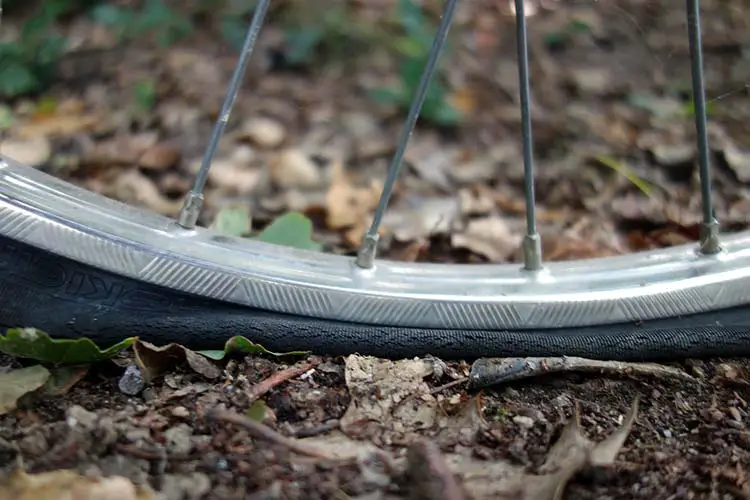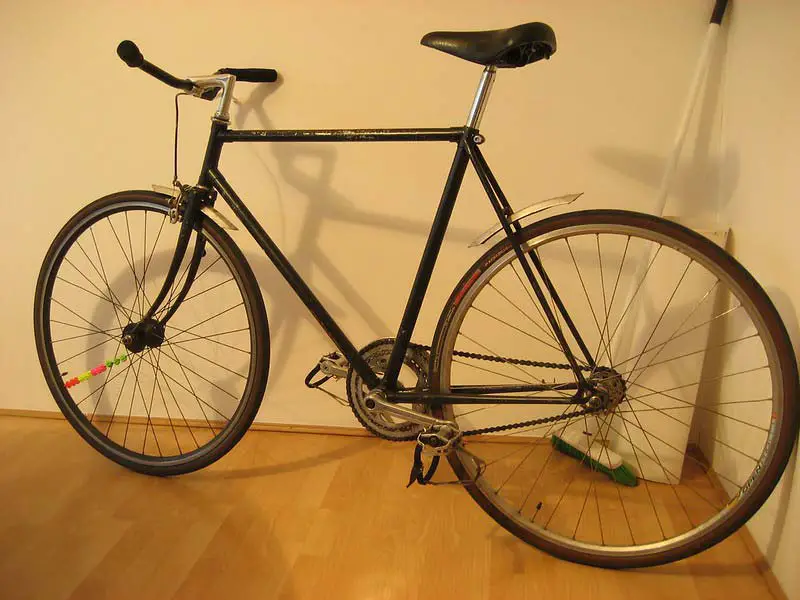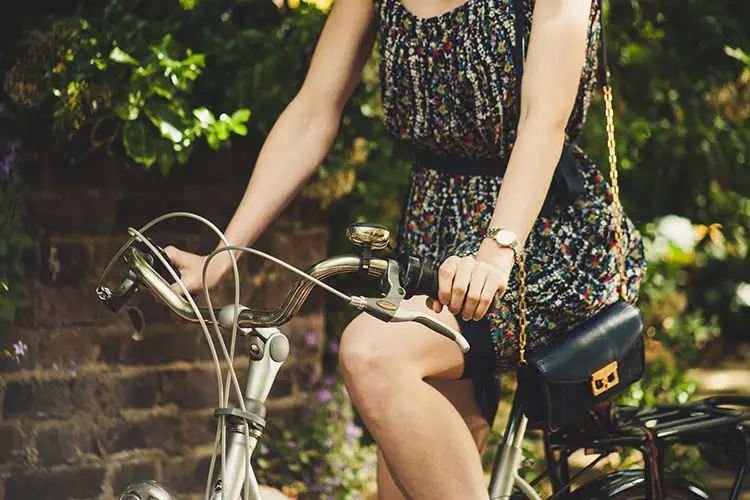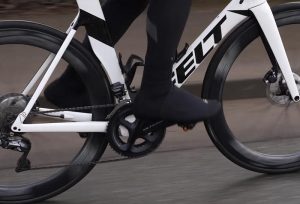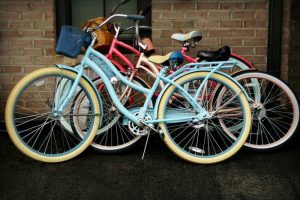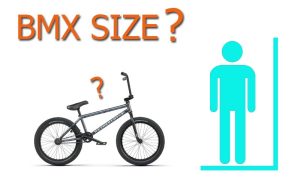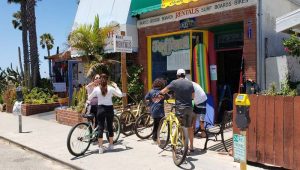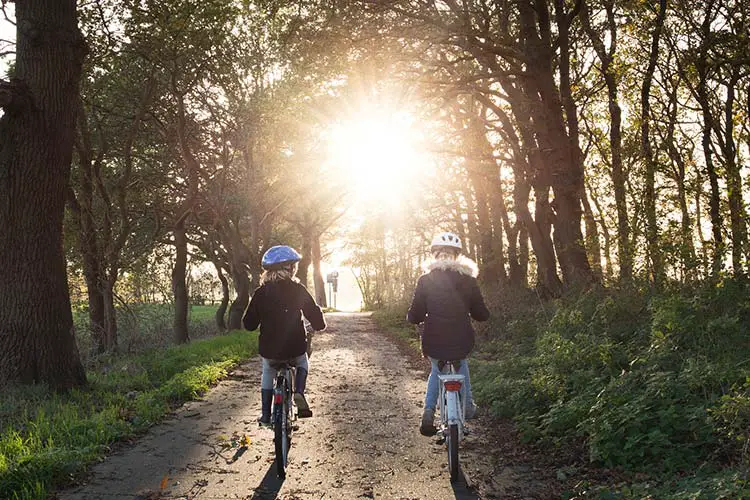
Teaching your child a new life skill, such as riding a bike, is quite a rewarding experience. With that said, most parents are often afraid of the many dangers that come into play when a child learns how to ride a bicycle on their own.
See also:
Learning bicycle riding has many benefits from childhood to adulthood. First of all, it is a sport and a physical activity, which will help your kid to stay fit until their teenage, adulthood, and senior life. Second, riding a bicycle is a life skill that they can be proud of when the time comes.
Third, a bicycle is a means of transportation that is eco-friendly, which teaches your child how to be responsible for the environment at a young age.
So, do you want to teach your child how to ride a bike? Worry not – we have a guide below on how you can safely allow your little kid to learn to ride the bicycle. Just stick to our pointers and you and your kid should be fine.
Contents
Wear safety gear
The first step to riding a bicycle (or any moving vehicle, for that matter) is to wear safety gear. Children at a young age are fragile and accidents could be fatal if they didn’t wear safety gear.
This includes wearing a helmet, elbow and knee pads, and proper cycling shorts. The choice of the appropriate shoes will also help them to stay away from accidents. Look for safety gear that will fit well so that your child will be secured but not feel uncomfortable.
Choose the appropriate bike
Choosing the right bike is important as not all bikes are the same. Some are meant for experts while others are beginner-friendly. You should choose the right height of bike for your child so that if ever they fall, it won’t be too high. Think of it as choosing a horse – it should be easy for the child to control on their own.
Aside from the bike’s overall height, the reach of the pedal and the handle should also be considered to avoid feeling discomfort while riding. The child should also be able to sit properly on the bike.
When training your child on how to ride a bike, all kinds of safety features are important. The bike brake should be easy to grip so your kid will come to a full stop conveniently. Likewise, the bike should have smooth-rolling training wheels. Most of these training wheels can be removed once your child is used to riding without them (one at a time, at best, to avoid accidents).
Check the bike’s condition
Whether you have a new or a used bicycle for your child to use, always check its condition before riding. Similarly to how we perform safety checks on our car or vehicle before taking off to work, school, or any destination, always pay attention to the bike.
You should check if the bike has rusting parts or a broken cable for the brake. The brake system is the most important safety feature of the bike and it could save lives. Therefore, it should be functioning properly.
Check the tires if they are not flat. If they need to be filled up, consider getting a manual tire inflator and apply just the right amount of pressure to avoid accidents on the road.
Practice Balancing
To help children learn how to ride a bike, they need to know how to balance the bike. This is why many parents buy a balance bike instead as a training ground for them. Balance bikes have no pedals so your child will only focus on balancing the bike while gliding.
Moreover, safely getting on and off the bike using their feet will help them. Triggering the brakes is one aspect but stopping with your feet is another. Once your child got the hang of it, they’ll have fewer problems later on.
Learn the Basic Controls
Aside from balancing, getting used to the pedals, steering the bike, and using the brakes are all important aspects of teaching your child to ride a bike. It will take them quite a while at first but it will eventually become easier with practice.
You can also assist them at first, especially if they are having trouble with working on the pedals and steering. You can practice their steering capability by putting obstacles, such as your water bottle.
When your child finally got the hang of using the pedal, you can simply let go. This will help test their independence and how much they can hold the bike while balanced.
Bike brakes are different depending on the type of bike you have. For example, coaster brakes need to be stepped on, while hand brakes need some pressure from their hands while they’re steering and balancing. Both of them work well for their purpose.
By practicing your child in using the brakes, they’ll immediately have a safety precaution once they go too fast or if they need to stop. Hand brakes are especially difficult to handle because of the required pressure to stop. That’s why training your child in using the brakes is important.
Be patient
Teaching your child how to balance on the bike doesn’t have to happen overnight. It can be days, weeks, or even months – don’t be impatient. Don’t feel jealous of other kids or parents just because their kid is doing better. Everyone learns at a different pace and that is okay.
Learn to take it one step at a time. If your child is tired for the day, you should try again the next day. Any rider, young or old, who is already exhausted, is more prone to accidents, so you should give them sufficient rest. A well-rested rider has more focus and is more willing to learn than an exhausted person.
Prepare drinks
Always prepare hydration to avoid exhausting your child, especially on a hot, summery day. Riding a bicycle is considered an exercise so you should treat it that way. Prepare a tumbler that doesn’t leak out water and also doesn’t lose its cool temperature during the day.
Fortunately, many bike designs nowadays have a clamp or area to fit most standard-sized hydration tumblers. In this way, you can bring the drinks anywhere.
Don’t be afraid
The most important aspect of allowing your child to ride and learn the bicycle is to take away fear. Instead, help them build independence on their own.
Riding a bicycle will always include a moment of fall, and that’s very normal. It’s ok to fall and get slightly scraped or bruised sometimes – which is why safety gear is important. However, that’s all part of the learning process. In real life, kids need to look after themselves when they grow up so you need to make them more independent. Let them go but still watch over them in case something bad happens.
Reassure them
Kids could be scared of taking off the training wheels for the first time. As a parent, your job is to reassure them that they can do it. Practice makes progress, and with each day that they ride the bike, be appreciative of their efforts.
For example, you can say “Wow! You rode 3 blocks today! That’s a new record!”, which will boost their mood overall. Reassurance will help keep the child motivated in their bike lessons.
Start slow and steady
As mentioned above, it is not healthy to force competition between you and other parents, families, and/or kids. Just because their kids learned much faster or didn’t fall off the bike that much doesn’t make your efforts invalid – everyone deserves to learn at their own pace!
Riding a bicycle is like life – everyone goes on a different path. All of us start at the bottom and eventually, we get better with practice, dedication, time, and support. The same principle applies to teaching your kids how to ride a bicycle.
Practice in low-traffic areas
When practicing bike riding, consider going into subdivisions or roads with minimal traffic. As much as possible, avoid roads that are near the highway as they are dangerous for your child. Pick a spot where not many vehicles pass by for safety.
If you currently don’t have a place to practice in your neighborhood, such as if you only live in an apartment or condo unit, try your luck at bike parks. These parks offer a plethora of space for your child to practice different kinds of bikes. Bike rental parks are usually a great option if you’re still unsure if your child will eventually like bike lessons.
Conclusion
Although most people will tell you that 5 years old is the best time to start, there’s no recommended age to learn a bike – anyone can learn to ride whenever they want to! A child will be ready once they’re comfortable, well-coordinated, and fully-developed in various aspects of their life.
Bottom line: the best way to learn to ride a bike efficiently is if your child is greatly interested and if they’re not being forced to it.
